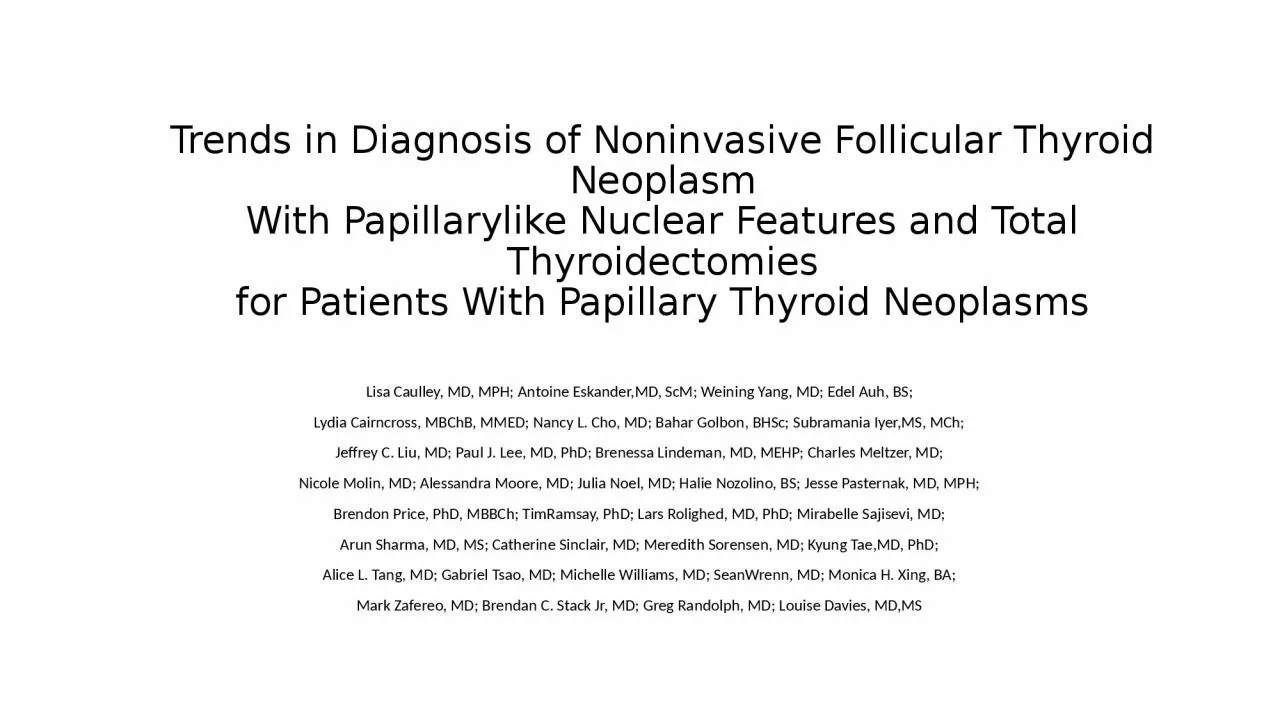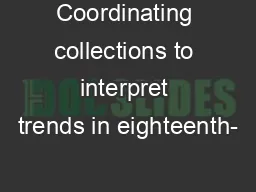PPT-Trends in Diagnosis of Noninvasive
Author : LaughsALot | Published Date : 2022-08-01
Follicular Thyroid Neoplasm With Papillarylike Nuclear Features and Total Thyroidectomies for Patients With Papillary Thyroid Neoplasms Lisa Caulley MD MPH Antoine
Presentation Embed Code
Download Presentation
Download Presentation The PPT/PDF document "Trends in Diagnosis of Noninvasive" is the property of its rightful owner. Permission is granted to download and print the materials on this website for personal, non-commercial use only, and to display it on your personal computer provided you do not modify the materials and that you retain all copyright notices contained in the materials. By downloading content from our website, you accept the terms of this agreement.
Trends in Diagnosis of Noninvasive: Transcript
Download Rules Of Document
"Trends in Diagnosis of Noninvasive"The content belongs to its owner. You may download and print it for personal use, without modification, and keep all copyright notices. By downloading, you agree to these terms.
Related Documents














